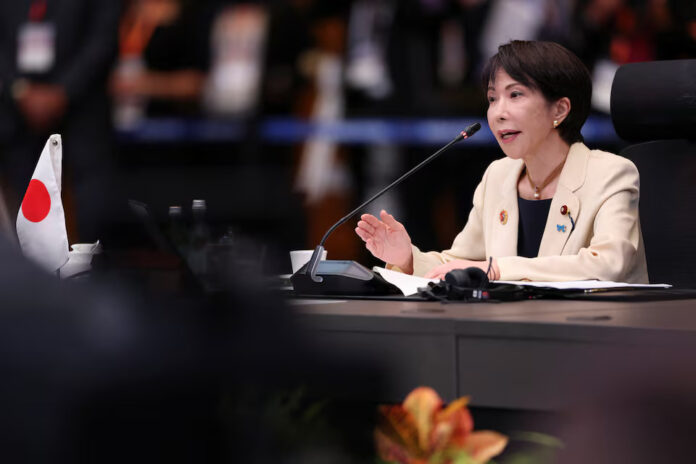
Japanese Prime Minister Sanae Takaichi said on Monday that her government will begin work early next year on a new multi-year fiscal framework, signalling a significant shift away from Japan’s long-standing annual budget balance target.
Takaichi said she would instruct her cabinet in January to start drafting a new fiscal target that measures Japan’s financial position “over several years,” rather than on a yearly basis.
She stressed, however, that the existing primary budget balance target would remain in place for now.
Her comments follow remarks on Friday in which she declared her intention to abandon the annual primary budget balance as Japan’s key fiscal consolidation goal. Instead, the government will assess fiscal health “by looking at its balance in a span of several years,” she told parliament.
The move reflects a broader policy realignment under Takaichi, a long-time advocate of expansive fiscal measures, and marks a departure from previous administrations that used the annual target to demonstrate fiscal discipline.
Under a plan set in June, the government aimed to achieve a primary budget surplus between fiscal 2025 and 2026, a goal now likely to be revised.
The primary budget balance, which excludes new bond issuance and debt-servicing costs, indicates whether government spending can be financed without additional borrowing.
Japan has repeatedly delayed achieving a surplus as successive administrations rolled out large stimulus packages to counter economic slowdowns and crises, including the COVID-19 pandemic.
Takaichi has criticised the primary budget balance framework as “out of sync with global standards” and too restrictive for Japan’s growth agenda.
Her administration plans to compile a new stimulus package focused on easing the impact of rising living costs, boosting investment in key growth sectors, and strengthening national defence.
Japan’s public debt, at more than twice the size of its economy, remains the highest among major developed nations.
While Takaichi’s approach could provide fiscal flexibility to spur growth, it also raises concerns among analysts about the government’s long-term commitment to restoring fiscal sustainability.
Source: Reuters
Written By Rodney Mbua


















